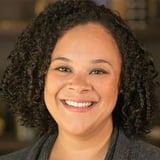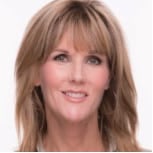Log in or create a free Rosenverse account to watch this video.
Log in Create free account100s of community videos are available to free members. Conference talks are generally available to Gold members.
Summary
So much of the work around Diversity, Equity, and Inclusion is intentionality. Recruiting should be happening at all levels at all times, at times latent and at times active. This is the work of an entire organization but as design leaders we can mandate this in our code of ethics. In the conversation, we talk about the ways to be and remain persistent and committed to building diverse internal communities.
Key Insights
-
•
Code-switching at work is a heavy, often unacknowledged burden for many employees of color.
-
•
Companies must create truly safe psychological spaces where people feel free to bring their whole selves without fear.
-
•
Diverse interview panels help candidates feel represented and reduce bias during hiring.
-
•
Proactive recruiting outside typical elite channels uncovers hidden and underrepresented talent.
-
•
Small recognition programs like Envision's bonus kudos can significantly boost employee morale and belonging.
-
•
Anonymous employee surveys with hard questions help identify unmet needs in workplace inclusion.
-
•
Rethinking hiring criteria to value coachability and growth potential over rigid checklists opens doors for diverse hires.
-
•
Accountability mechanisms and leadership buy-in are essential for meaningful diversity and equity progress.
-
•
Removing educational biases in job descriptions expands access to more diverse candidates.
-
•
Design operations professionals play a key role as internal advocates pushing organizations toward equitable cultures.
Notable Quotes
"As a Black woman, I can't bring my whole self to work, but I hope one day we will."
"People often change their entire selves just to seem educated or fit in at work."
"If we truly want diverse teams, we have to create safe spaces for people to do their best work."
"Making sure your interview panel includes someone a candidate can identify with is a small but critical step."
"Recruiting can be tedious, but every interaction is a chance to show candidates you care."
"Sometimes you have to take a chance and hire someone because they have the ability to grow into the role."
"Removing rigid educational requirements opens more opportunities for diverse talent."
"Half of your final stage candidates should be diverse — that kind of commitment drives real change."
"We can be the squeaky wheel inside organizations pushing for psychological safety and equity."
"This moment in history is a revolution — no more complacency, we have to keep working for change."
Or choose a question:
















More Videos

"For the first time, I was able to advocate for funding directly for the research function at high executive levels."
Nalini KotamrajuResearch After UX
March 25, 2024

"Availability bias means hiring managers often pick fruit from a tree they haven't planted."
Dean BroadleyNot Black Enough to be White
January 8, 2024

"Designers are change agents. This is part of your passion and what gets you up in the morning."
Denise Jacobs Nancy Douyon Renee Reid Lisa WelchmanInteractive Keynote: Social Change by Design
January 8, 2024

"Design thinking helped us empathize, define problems, co-create ideas, and then test them like products."
Kim Fellman CohenMeasuring the Designer Experience
October 23, 2019

"Power is the ability to change another person’s reality."
George AyeThat Quiet Little Voice: When Design and Ethics Collide
November 16, 2022

"Short-term pairings with different design people help bring back contributions into the central system."
Nathan CurtisBeyond the Toolkit: Spreading a System Across People & Products
June 9, 2016

"We focus on delivering high quality but also moving fast—being comfortable negotiating that tension is important."
Greg PetroffThe Compass Mission
March 10, 2021

"Global and local cultures are closely entwined and always influencing one another."
Chloe Amos-EdkinsA Cultural Approach: Research in the Context of Glocalisation
March 27, 2023

"Having the qualitative and quantitative data together lets us tell a comprehensive story to stakeholders."
Mackenzie Cockram Sara Branco Cunha Ian FranklinIntegrating Qualitative and Quantitative Research from Discovery to Live
December 16, 2022
















